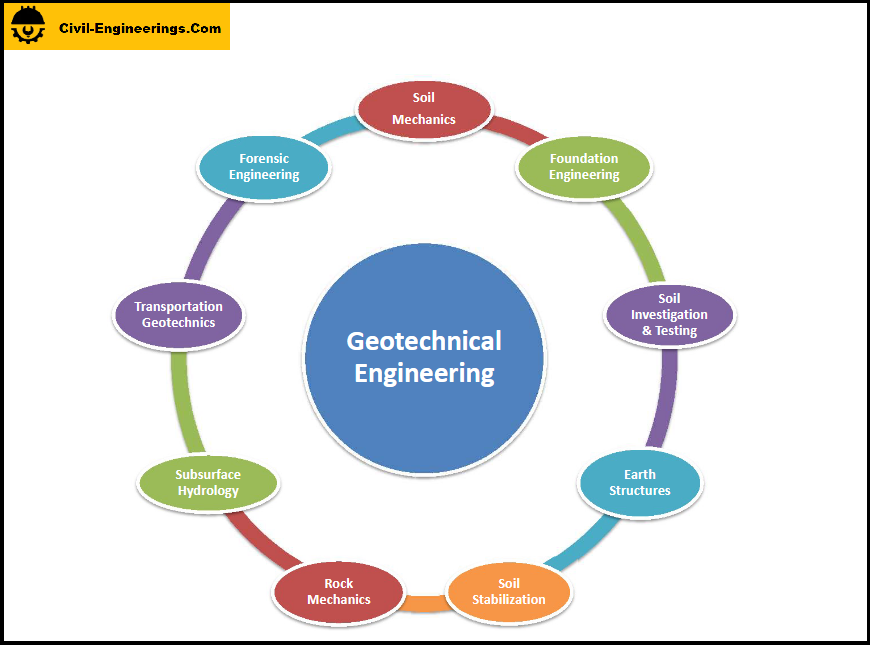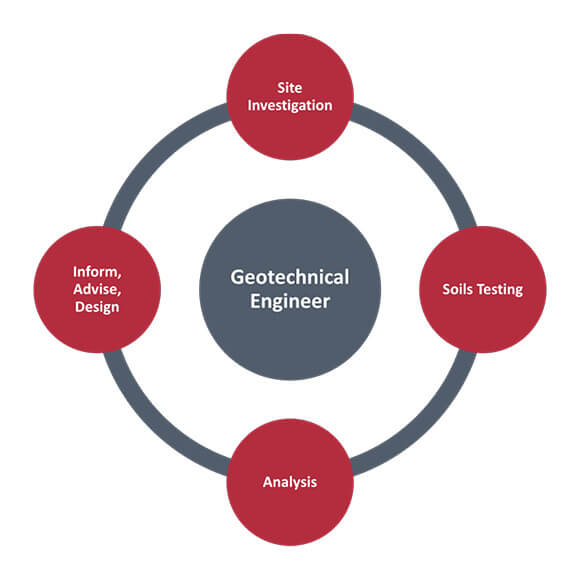The 30-Second Trick For Geotechnical Engineering For Construction Projects
All about Geotechnical Engineering For Construction Projects
Table of ContentsGeotechnical Engineering For Construction Projects Can Be Fun For AnyoneGet This Report about Geotechnical Engineering For Construction ProjectsThe Only Guide for Geotechnical Engineering For Construction ProjectsThe smart Trick of Geotechnical Engineering For Construction Projects That Nobody is DiscussingTop Guidelines Of Geotechnical Engineering For Construction ProjectsGetting My Geotechnical Engineering For Construction Projects To Work
The role of geotechnical design significantly takes care of realizing the functions of dirt and rock, which might vary significantly by their thickness, moisture material etc. These features need to be checked out by geotechnical engineers to anticipate their motions under various conditions. The security as well as stability of frameworks are influenced by dirt problems, making this analysis needed.A geotechnical designer will certainly analyze dirt to identify the bearing capability of the planet and suggest correct structure types, such as shallow structures, deep structures like stacks, or specialized services like floating foundations for soft dirts. Recognizing the features and actions of soil and rock, along with exactly how they connect with buildings that have actually been erected on or within them, is among the key explanations for why geotechnical design is essential.
Ecological defense is completed with geotechnical engineering. Experience in air, water, and soil high quality upkeep is put to make use of by geotechnical engineers to lessen the adverse results of projects.
To sum up, geotechnical design is an essential technique that protects the resilience and honesty of civil framework. Geotechnical engineers contribute to making structure projects efficient all over the world by recognizing the behavior of planet products and applying suitable planning approaches.
Geotechnical Engineering For Construction Projects for Beginners
The fundamental security of any kind of project is important. Geotechnical design plays a crucial function in making sure that frameworks are improved strong ground, literally and figuratively. By analyzing soil, rock, and subsurface conditions, geotechnical engineers supply important insights that assist in the style, building, and upkeep of structures and facilities.

Some Known Incorrect Statements About Geotechnical Engineering For Construction Projects
Research laboratory testing: Determining the residential or commercial properties of dirt and rock. A number of high-profile building and construction jobs have effectively used geotechnical engineering to guarantee their stability and security.

As a leader in geotechnical design, BECC Inc. is committed to providing innovative and effective solutions that satisfy the greatest requirements of high quality and safety and security. For additional information on just how BECC Inc. can sustain your next building project, contact us today and allow us assist you develop on solid ground.
William Rankine, an engineer and physicist, created a different to Coulomb's planet stress concept. Albert Atterberg established the clay consistency indices that are still made use of today for soil category. In 1885, Osborne Reynolds identified that shearing causes volumetric expansion of thick materials and contraction of loosened granular materials. Modern geotechnical engineering is said to have actually begun in 1925 with the publication of Erdbaumechanik by Karl von Terzaghi, a mechanical engineer and geologist.
Fascination About Geotechnical Engineering For Construction Projects
Terzaghi additionally established the framework for theories of bearing ability of structures, and the theory for prediction of the rate of negotiation of clay layers as a result of combination. Afterwards, Maurice Biot fully created the three-dimensional dirt debt consolidation theory, extending the one-dimensional version formerly established by Terzaghi to much more general theories and introducing the set of standard formulas of Poroelasticity.
Geotechnical designers check out and establish the buildings of subsurface problems and go products. They likewise develop corresponding click over here earthworks and keeping structures, tunnels, and structure foundations, and may monitor and evaluate sites, which might better involve website tracking as well as the threat evaluation and mitigation of all-natural dangers - Geotechnical Engineering for Construction Projects. Geotechnical engineers and design geologists execute geotechnical examinations to obtain information on the physical homes of soil and rock hidden and surrounding to a website to create earthworks and structures for proposed frameworks and for the repair of distress to earthworks and frameworks created by subsurface conditions.
The Of Geotechnical Engineering For Construction Projects
Geologic mapping and interpretation of geomorphology are typically finished in consultation with a rock hound or design geologist. Subsurface exploration generally involves in-situ testing (for example, the typical penetration test and cone infiltration test). The excavating of examination pits and trenching (particularly for finding mistakes and slide aircrafts) may likewise be utilized to discover dirt conditions at depth. Still, they are in some cases used to permit a rock hound or engineer to be decreased right into the borehole for direct visual and manual examination of the dirt and rock stratigraphy. Various soil samplers exist to meet the demands of various design projects. The conventional penetration examination, which utilizes a thick-walled split spoon sampler, is the most usual method to collect disrupted samples.

Generally, the interface's exact geometry is unidentified, and a simplified user interface geometry is thought. Finite slopes need three-dimensional designs Look At This to be analyzed, so most slopes are assessed thinking that they are considerably wide and can be represented by two-dimensional designs.
3 Easy Facts About Geotechnical Engineering For Construction Projects Shown
Developing the design based on a working theory of behavior expected under the most potential conditions. Choice of amounts to be observed as building and construction profits and determining their anticipated worths based on the functioning hypothesis under the most unfavorable problems.
Measurement of amounts and assessment of real conditions. It is improper for projects whose style can not be altered throughout building and construction.